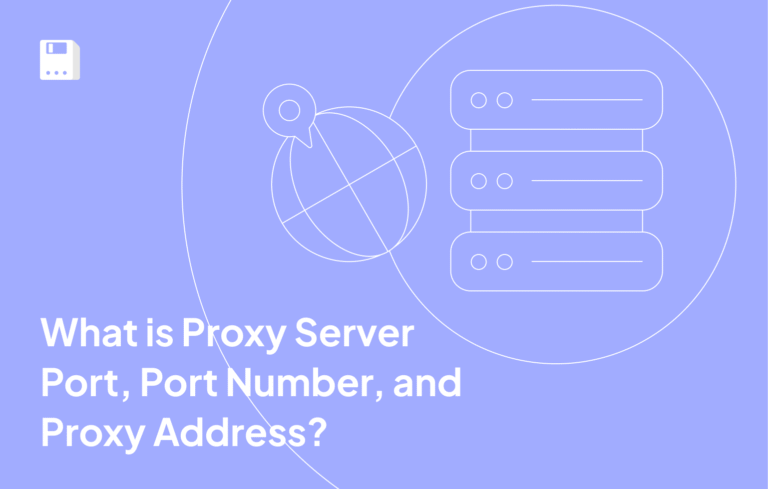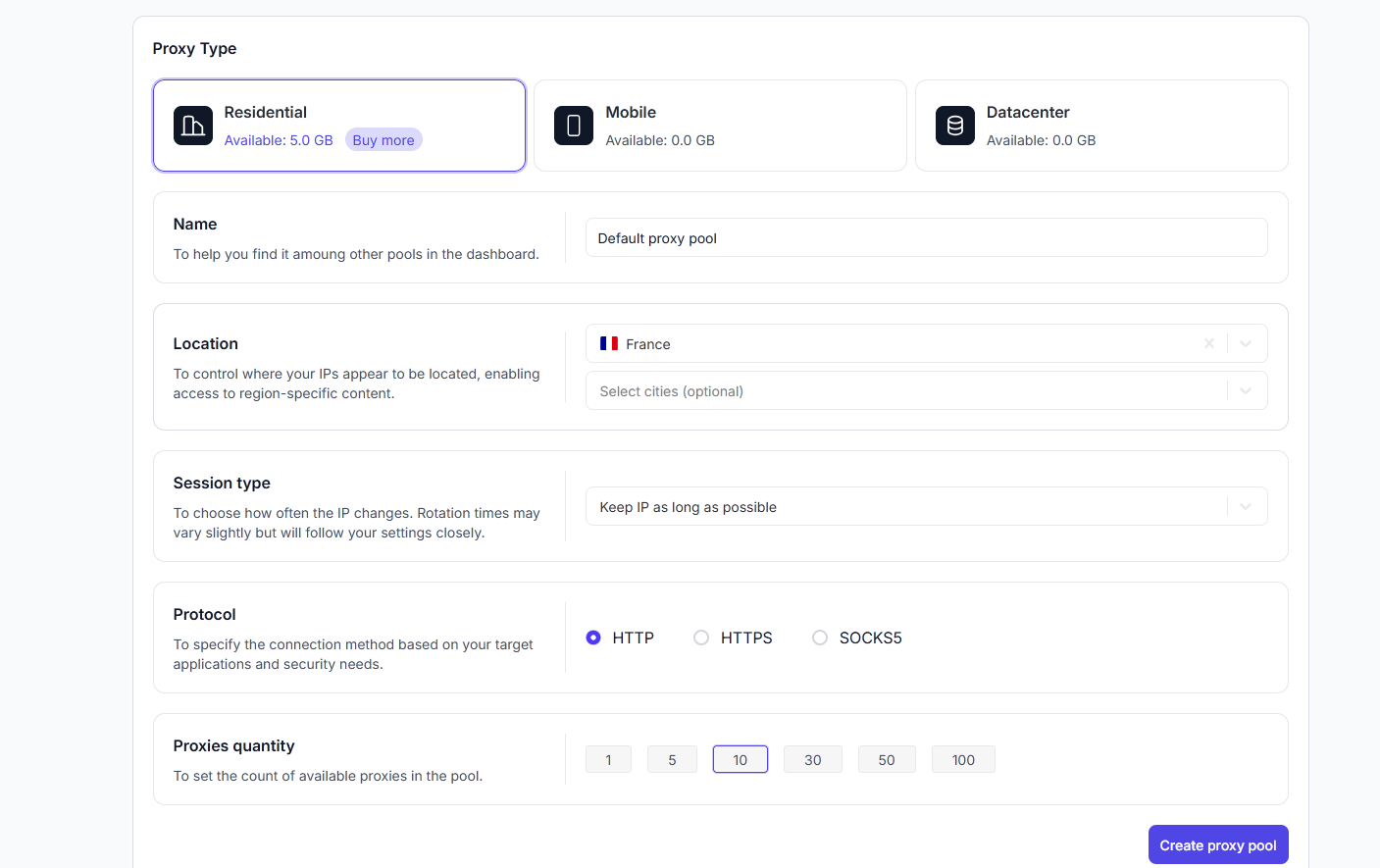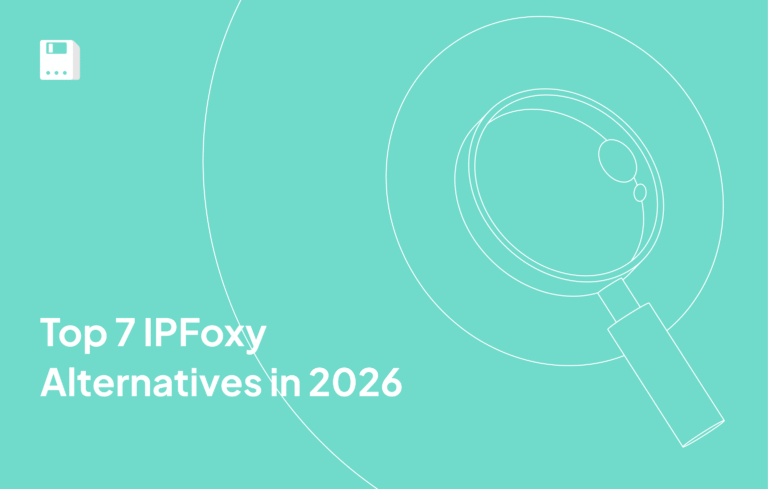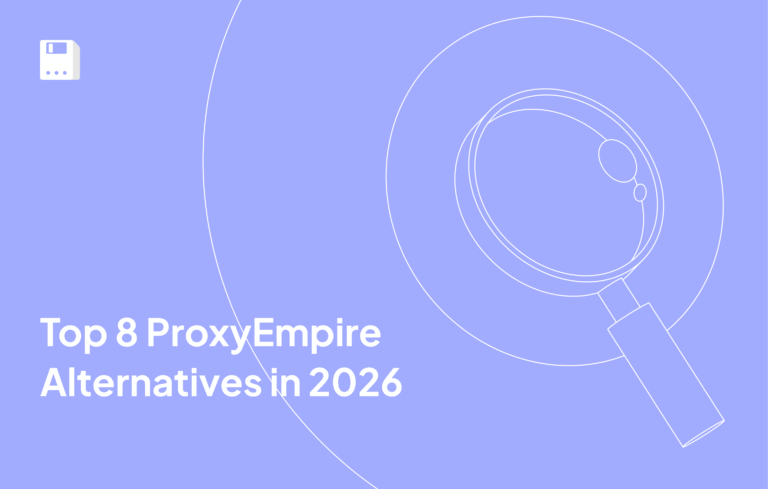We tend to take technology for granted and reap its benefits without giving much thought to what’s going on under the hood.
I used to be like that about proxies. I knew they were an excellent tool for maintaining online privacy and that companies and individuals used them for data scraping and managing multiple social media accounts.
The finer details escaped me, though. Like, what is that proxy server port number I have to keep typing in? What does proxy address mean? Is it the same as an IP address?
After extensive research, I have written this article to dispel any confusion and help others better understand the tool they use. In it, you’ll find out everything about port numbers and addresses, how they get assigned, and where you need to look if you ever forget them.
What Are Proxies & How Do They Work?
I’ll explain the significance of proxy numbers and addresses in a bit. However, clarifying proxies briefly first will help the rest make more sense.
By default, you connect to the internet using an internet protocol (IP) address assigned by an internet service provider (ISP). You also establish connections to different services by accessing specific, universally recognized port numbers.
For example, default HTTPS requests use port 443, while email goes through port 25. These and other core ports are defined and regulated by the Internet Assigned Numbers Authority (IANA).
Without a proxy, the ISP and anyone monitoring your network can see which websites you’re accessing. Some ISPs throttle certain websites, while workplace and school firewalls may outright block websites they consider inappropriate or distracting.
So ordinarily, you access a website, which sends any requested information back. A proxy introduces an extra step in this exchange, protecting your anonymity and letting you bypass geo-restrictions.
With an active proxy, website requests reach a proxy server first. From there, the server forwards them to the original target through a different IP address, which can be anywhere in the world where the proxy provider has servers.
The destination website thinks the connection is coming from the proxy server and will respond accordingly. The proxy then relays the data back to you. Meanwhile, ISPs and anyone who could be monitoring the connection only see a connection with the proxy server, not the destination.
What Is a Proxy Port?
A proxy’s port is the endpoint through which users connecting to it access a specific service. It’s the second half of the IP/domain name + port pair needed to create a valid connection.
Proxies use a single IP or domain yet provide many different services. In FloppyData’s case, users connect to geo.g-w.info, whether they’re using an HTTP, HTTPS, or SOCKS5 proxy. Each of these different proxy types has a designated port number that tells the proxy server what type of connection to expect and route.
The concept clicked for me when I compared it to a hotel. Think of a website request as the intent to reach a friend who’s staying at a hotel. The hotel itself is the proxy’s IP address – you know where it is and can contact the front desk.
However, that’s not enough on its own. The front desk can connect you to your friend only if you know which room they’re staying at. The room’s number is the port number the proxy uses and tells it exactly what kind of connection you’re going for.
Providing the wrong proxy port number will result in a failed connection since the server won’t know what you’re requesting and it can’t redirect the request properly.
What is a proxy number?
A proxy number designates the specific port the provider decided to use when listening for requests. The exact number doesn’t matter that much. The fact that the port it’s associated with is the only one configured to recognize and accept a request type does.
For example, FloppyData assigns:
- Port 10080 for HTTP proxies
- Port 10443 for HTTPS proxies
- Port 10800 for SOCKS5 proxies
These particular numbers aren’t standardized – any other set of high numbers in the 1024 – 65535 range would do. The ones FloppyData chose are similar to the conventional numbers for their respective protocol types, which makes them easier to remember.
Why don’t proxies use default ports?
Keep in mind that port numbers are only necessary for establishing a connection between you and the proxy. Once the proxy server receives your request, it uses standard port numbers to route it to the destination website.
Proxy providers avoid using these same ports for listening purposes. On the one hand, it ensures conflict avoidance since other services on the same server might already be using them. On the other, it makes blocks and throttling by tools like firewalls less likely.
What Is a Proxy Server Address?
My research into what proxy ports are proved to be trickier in part due to similar and ambiguous terms. Different sources, especially non-technical ones, keep confusing concepts like IP and server addresses. You’ll also see me use proxy ports, server ports, and port numbers interchangeably, so it’s important to clear up any misunderstandings.
A proxy server address is a combination of an IP address or domain name and a valid port number. You need all this information to connect to a proxy service correctly. For systems that accept inline verification, the relevant part of a properly formatted FloppyData address when using an HTTP proxy would look like this:
geo.g-w.info:10800A common approach is to enter the domain name in one field and the port in another. This helps alert users to formatting mistakes like accidentally entering port numbers outside the established range. Additionally, it strengthens authentication and reduces the chance of connection data being exposed.
IPs vs. domain names
While some proxy providers still use raw IP addresses, switching to domain names has become common and comes with several benefits.
Users will remember something like geo.g-w.info more easily than IPs. Better yet, providers can set up rotating proxies through the same domain name while making hundreds of IPs available without users having to keep track of and enter them manually.
Domain names also make scaling up or reconfiguring proxy infrastructure easier. The provider makes the necessary changes in the background, while users can keep accessing proxies as usual.
Usernames and passwords
Login credentials aren’t always part of a proxy address. Free proxy services don’t require them, for example. On the other hand, they are indispensable in several ways when connecting through premium providers.
In FloppyData’s case, usernames and passwords are more than just user identifiers. Each instance in every FloppyData proxy pool has a unique username and password. These contain all the internal info the provider needs to connect to assign the right IP addresses, geo-locations, and session parameters.
How to Find a Proxy Server Address?
The answer depends on whether you have used a proxy service before and there’s a record of the information somewhere on your device.
When I first wanted to use proxies, it became clear I’d have to obtain the information online to start. Free proxies were an option, but even cursory research and limited hands-on experience were enough to put me off them.
Strictly from a user standpoint, most are terrible. The address selection is small to begin with, and many aren’t valid. Lots of people are using the addresses that do work at the same time, so the lag is huge.
And that’s before addressing the elephant in the room – user data privacy. Many free providers have no qualms about logging internet usage through proxies and selling this data, which completely defeats the purpose of using a proxy.
Paid proxy services offer access to as many unblocked IPs as one needs, and information on them is easy to get.
Finding information on FloppyData proxy addresses
Here are the simple steps you need to go through to obtain everything needed to connect to FloppyData proxies:
- Go to FloppyData’s website and either sign up for a new account or log into an existing one.
- Once you’re logged in, the dashboard shows an overview of available proxies and traffic. Buy a plan for the proxy type you need and select Create proxy pool.
- Name the pool, choose its country and protocol, how long sessions should last, and how many proxy instances to create. Finalize your choice by clicking Create proxy pool.
- The new pool is added to the dashboard. Selecting View proxies opens a list containing the proxy address as well as username and password info for each instance.
- You can now copy individual elements, instances, or the entire pool. Downloading as a .txt file works too.
The process is the same regardless of your operating system and browser. Some programs, like anti-detect browsers, might ask for a different arrangement when batch-importing proxies. The standard address:port:username:password formatting should work in most cases.
How Do I Find My Proxy Server Address on My Phone?
Each mobile operating system is a bit different, but the steps are straightforward in either case.
For Android:
- Enter the phone’s settings, then tap on Connections.
- Tap on Wi-Fi to display all saved and detected Wi-Fi connections.
- Tap the gear icon next to the active Wi-Fi network’s name.
- Select View more to open the advanced settings menu.
- Navigate down to Proxy and tap on it.
- If the proxy is off, switch from None to Manual.
- The section will expand to include proxy address information.
For iOS:
- Open the phone’s settings and tap on Wi-Fi.
- Tap the info icon next to the signal strength indicator of our active Wi-Fi connection.
- Scroll down until you reach the HTTP PROXY section.
- Tap on Configure Proxy.
- If the proxy is turned off, select Manual.
- This brings up another panel with all required proxy address information.
Both versions presuppose that you’ve already bought a proxy plan and set the proxy up on the phone. Otherwise, you’ll first need to get the information from a proxy provider’s website first.
What is a proxy port in WiFi settings?
When a proxy is active on a phone and the details are entered correctly, the proxy port shown in the Wi-Fi settings is the port number used to connect to the proxy server.
Why I Chose FloppyData Proxies
99.8% Success Rate – Practically all connection requests resolve successfully, making service interruptions and retries few and far between.
99.99% Proxy Uptime – There were never any downtimes. The proxies I used were always available and running smoothly.
95% Clean IP Rate – Websites consider the vast majority of FloppyData’s proxies trustworthy, significantly reducing the chances of being blocked or blacklisted.
Seamless Integration – Setting FloppyData proxies up was straightforward whether I needed them on desktop or for my phone.
Fast and Stable Connections – I never experienced slowdowns when loading pages or other delays indicative of poor service. Browsing felt normal and responsive.
Enhanced Anonymity – Being able to conceal my original IP brings genuine peace of mind in an age where seemingly everyone wants to track your online whereabouts or harness your data.
Conclusion
Proxy addresses and their building blocks – IP addresses, domain names, port numbers, and user credentials – work behind the scenes to create a seamless and secure user experience. They streamline proxy usage, letting both new and seasoned users leverage proxies more effectively.
Once I grasped these concepts, I was better able to configure different proxy types as well as troubleshoot and resolve connection issues. Hopefully, the knowledge laid out here will help you do the same.
FAQ
What is a proxy server address and port number?
A proxy address comprises the server’s IP or hostname, followed by a port number (e.g., 192.168.1.1:8080). The address directs your traffic to the correct proxy server, while the port identifies the specific service endpoint on that server.
What role does the port number play in proxy configuration?
The port number tells your device which gateway on the proxy server to use (e.g., port 8080 for HTTP, 1080 for SOCKS). It ensures your traffic is routed correctly between your system and the proxy service.
Share this article:
Table of Contents
Proxies at $1
Get unlimited possibilities













